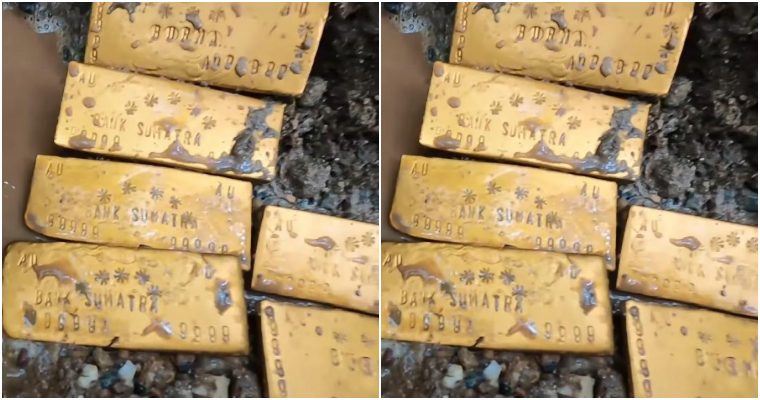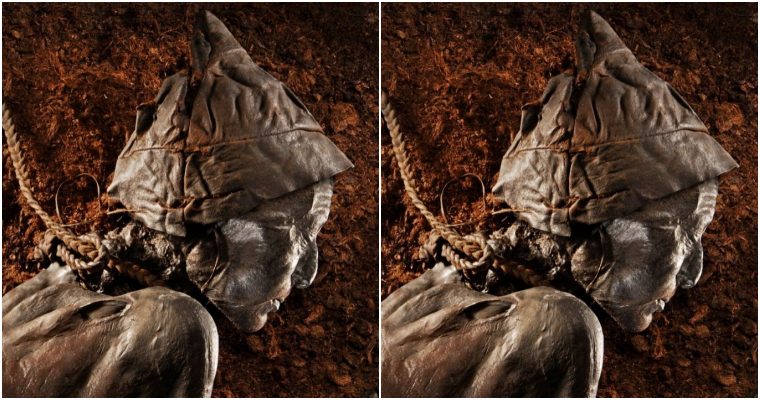Un antiguo castillo militar que los expertos creen que sirvió como puerta a la frontera oriental de Egipto protegiéndolo de los persas hace 2.600 años ha sido desenterrado. Descubierta en el norte del Sinaí, se cree que la fortaleza data del 664-610 a. C. en la era Psamética, la última antes de la invasión persa en el 525 a. C.
Las fotos publicadas de la excavación revelan una serie de artículos que incluyen puntas de flecha de metal, dagas de piedra y figurillas.
El edificio fue descubierto por una misión arqueológica egipcia y data de hace casi tres milenios, cien años antes de que los persas invadieran Egipto.
Una misión arqueológica egipcia ha descubierto los restos de un castillo militar (en la foto) que data de la era Psamética del 664 al 610 a. C. en la provincia del Sinaí del Norte.
Según Hussein, se ha enfrentado a graves ataques que destruyeron la mayoría de sus edificios.
Los restos indicaron dos castillos en el sitio y se cree que el castillo principal que tiene 16 torres fue construido sobre la estructura de una construcción inacabada.
Durante los trabajos de excavación, se encontraron algunas habitaciones para los soldados que tenían la tarea de asegurar el castillo.
Mostafa Waziri, secretary-general of Egypt’s Supreme Council of Antiquities, said in a statement: ‘The mud brick-constructed castle that belonged to the 26th dynasty is the oldest historically,’
He added that the 85-meter-long southern wall of the castle was built on a structure of another unfinished castle.
Discovered in North Sinai, the fortress is believed to date to 664-610 – the Psamtik era – the last before the Persian invasion in 525 BC. The photo above shows metal arrowheads discovered at the castle’s excavation site in Sinai
The remnants of two castles were found and it’s thought the main castle with 16 towers was built on the structure of an unfinished construction that came before. The above pictures released by Egypt’s Ministry of Antiquities shows aerial views of the excavation
In a post on Facebook by the Ministry of Antiquities, the government agency said that it had located a tower previously standing on the northeast corner and the remains of the South-East Corner Tower, as well as parts of a southern wall.
‘So far, the excavation works are completed to discover the remains of architectural installations inside the castle,’ the post said.
‘This is the historic castle that the mission revealed on its eastern wall in 2008 and was built on the ruins of this castle another castle that has been previously revealed on the site.’
The Psamtik era which lasted from 664-610 BC was also known as the 26th dynasty, after which a battle led by Persian King Cambyses II defeated Psamtik III‘s army at the Battle of Pelusium, a city on Egypt’s eastern frontier.
Photos released from the dig revealed a number of items including metal arrowheads, stone daggers and figurines (pictured). The castle was discovered by an Egyptian archaeological mission and has been dated to almost three millennia ago
The castle stood a hundred years before the Persian invasion of Egypt in 525BC and could have acted as the main gate guarding the country’s eastern border. Stone daggers (pictured) and figurines were also revealed in the dig at North Sinai
The excavation indicated two castles on the same site with the later castle which has 16 towers was built on an unfinished construction. The occupation of Egypt, which began in 525 BC extended the Persian Empire, shown in purple above from what is now Turkey to Afghanistan
Después de solo seis meses en el trono, Psamético II entró en batalla contra la invasión persa dirigida por el rey Cambises II.
Los persas cruzaron el Sinaí con la ayuda de los árabes, donde se produjo la batalla en Pelusio.
El ejército egipcio se retiró a Menfis, la capital tradicional cerca de El Cairo y Cambises sitió el Sinaí y lo capturó, apoderándose de Psamético III.
El ex rey fue inicialmente bien tratado, pero luego fue ejecutado por conspiración contra los persas.
El imperio persa se extendió a una vasta área que incluye los actuales Irán, Afganistán, Tayikistán, Uzbekistán, Turquía, Irak, Kuwait, Arabia Saudita y duró desde el siglo VI a. C. hasta el siglo XX d. C.
Fuente: 2st.qirdar.com








